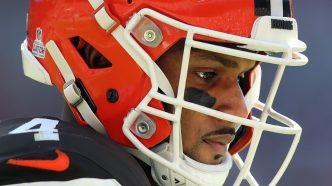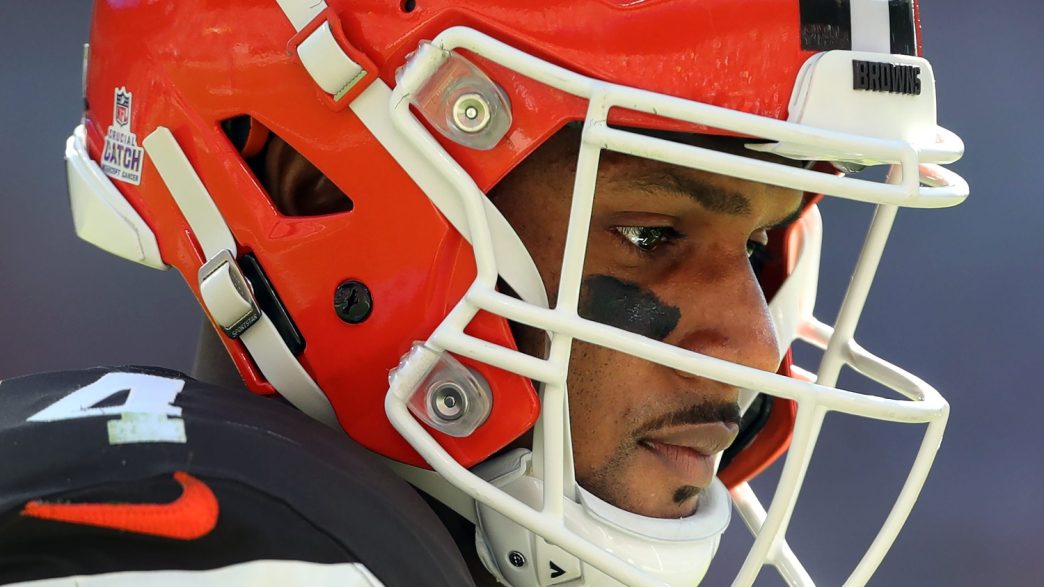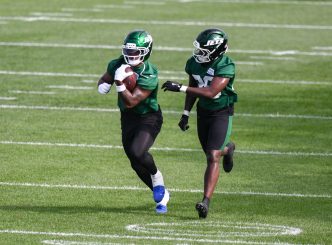The Cleveland Browns’ journey with quarterback Deshaun Watson has turned out to be a complicated saga, and it’s challenging to ignore the seismic shifts it has caused within the franchise. In March 2022, the Browns made headlines for all the wrong reasons when they pulled the trigger on a deal that sent three first-round picks and more to the Houston Texans in exchange for Watson, all while handing him a fully guaranteed $230 million contract. Fast forward to today, and the fallout from that decision continues to resonate: team owner Jimmy Haslam himself called it a “big swing and a miss.”
What’s next for the Browns following this rocky chapter? Let’s break it down into crucial elements of Watson’s tenure and consider what lies ahead.
The Bold Gamble – Watson’s Contract
Trading for Watson was a bold move—one that attracted eyes and eyebrows alike. It wasn’t just the hefty price tag that left fans and analysts in disbelief, but the backdrop of troubling allegations against him that sparked heated debates about morality, leadership, and accountability in the NFL. While the hope was that Watson would elevate the Browns to new heights, the return on investment has not reflected the expectations set by such a monumental commitment.
Performance Challenges
Watson’s on-field contributions have been marred by injuries and inconsistent performances. Limited by injuries, including a torn rotator cuff and two Achilles tears, his time on the field has felt more like a glimpse rather than the substantial contribution the Browns had envisioned. To illustrate the disappointment, Watson has played in just 19 games over three seasons, accumulating a subpar record of 9-10, with stats that include 19 touchdowns against 12 interceptions—not the numbers you expect from a franchise quarterback. When you take a step back, the financial implications become staggering; effectively, the Browns have shelled out $13.1 million for each touchdown he’s thrown in this stretch.
The Financial Tightrope
Turning our gaze to the salary cap, the ramifications of Watson’s contract loom large. If the Browns were to release him prior to June 1, 2025, they would be staring down a dead cap hit of a staggering $172 million. Post-June 1, the financial burden would shift to approximately $81 million, which still places a significant damper on the team’s flexibility in addressing critical roster needs moving forward. This situation complicates the Browns’ efforts to bolster their lineup and makes long-term salary cap management a daunting challenge.
The Draft Capital Conundrum
The trade drew heavily on the Browns’ draft capital, taking three first-round picks off the table for 2022, 2023, and 2024. With these assets gone, the team has faced increased pressure to strike gold in free agency, which is often a hit-or-miss endeavor. The loss of those high-value draft choices creates a troubling challenge—how does one replenish a roster under pressure to remain competitive without the ability to draft impactful young talent?
Taking Responsibility
Haslam’s public acknowledgment of this misstep reflects a shift in the organization’s tone. He stated, “We took a big swing and missed,” admitting that the decision wasn’t just a football call but one rooted in comprehensive organizational judgment. Acknowledging the error is vital, but it’s only the groundwork for the necessary rebuilding effort.
The Road Ahead: Navigational Strategies
Despite the challenges associated with the Watson deal, the Browns still have routes to navigate toward improvement. With ten selections in the upcoming 2025 NFL Draft, including a coveted second overall pick, there’s an opportunity to reload the roster. Potential stars like Travis Hunter and Shedeur Sanders are on the radar, both of whom could make a significant impact.
Going down the trade route could also yield dividends. Consider a hypothetical swap with the Chicago Bears to gather more draft picks; such a move could position Cleveland to maximize their opportunities to acquire fresh talent across various positions.
Investing in Offense
As they look to rebuild, it’s essential for the Browns’ focus to shift toward enhancing offensive capabilities. Solidifying the offensive line is key, as it can help bolster quarterback play amidst struggles—something every NFL team desires. Coupled with securing weapons at the wide receiver and running back positions, the Browns need to create an environment ripe for any future quarterback to thrive, be it Watson or someone new.
A Backup Plan at Quarterback
Given Watson’s inconsistency, the Browns would be wise to cultivate a plan B at quarterback. Developing a young quarterback, possibly even in the late rounds of the draft, might provide the depth necessary should Watson’s struggles continue. Significantly, alongside nurturing a rookie passer, adding a veteran presence can provide immediate competition and leadership stability.
A Hopeful Horizon
Navigating the complexities of the Watson contract has undeniably placed the Browns in a tough spot, both financially and roster-wise. However, a game plan that emphasizes judicious drafting, strategic trades, and a clear long-term vision can revitalize Cleveland’s fortunes. With the right steps, the Browns can emerge from this frosty chapter, paving the way for a more promising future for both the franchise and its passionate fanbase. It’ll take considerable effort, but revitalization is within reach if managed astutely.








